“No one can whistle a symphony, it takes an orchestra to play it” – H.E.Luccock
In times of uncertainty, or a constantly changing business environment, a high-performing team is the cornerstone of business success. The right set of people with a potent combination of skills, collaborative spirit, and enthusiasm can help businesses navigate through challenging times.
Harvard Business Review authors Ashley Goodall and Marcus Buckingham say: “… we have treated organizations like increasingly complex machines in which the humans are but parts and in which the solutions to any ills involve tweaking the system from the top — by addressing culture broadly — or by upgrading the individual components, the humans, themselves.” They point out that it is not the organizational culture nor individual performance that ensures success, but the teams comprising of those individuals.
So how do we create these highly effective teams? We’ve listed here some key characteristics of high-performance teams that CXOs should cultivate.
Set shared goals
Teams perform better when they know why they are together and share common goals. A perfect example of this is marketing teams because they get inputs from multiple teams in the organization but must balance those inputs against established goals so that they don’t end up being order takers. When there are clear objectives defined for the team, they are better able to understand requirements and complete projects. That also means breaking down silos and collaborating as a multi-functional team.
Define clear KPIs
Close on the heels of well-defined goals is the need to establish customer-centric and core KPIs for everyone on the team. KPIs will reveal whether the team is working towards shared goals and help make adjustments and course corrections where the team is falling short. They also provide a way to focus efforts and resources, so that the team can amass expertise in a particular kind of activity.
Give them freedom
For teams to be effective and deliver creative solutions to tough problems, they need a significant amount of autonomy around the way they work. In most organizations, CEOs concern themselves with not just the “what”, but also the “how” of tasks. But in the case of highly effective teams, we’ve seen that the difference lies in the C-suite owning the what, post which they step back and let the teams decide on the best route to get there. Lippert & Dulewicz stress that it is trustworthiness that is the most important factor for the success of virtual high-performance teams. Overly prescriptive demands reduce motivation and make teams feel disconnected from the work they do. The best thing to do is to set expectations and then get out of the team’s way.
Make them cross-skilled
A cross-skilled team will have all it needs to complete its tasks and do so efficiently without waiting for external help. This boosts their productivity, saves time, and allows for greater ownership over project completion. Cross-skilled teams not only bring their capabilities and their domain expertise but also their ability to collaborate and participate in something that will make an impact. This is a tricky requirement to manage, however, because if skills are too specialized then there could be some experts/ specialists that have no work sometimes. It’s thus important that we evaluate the skills needed for each team to reach their established KPIs.
Keep them small
Jeff Bezos once said that if you can’t feed your team with two pizzas, then it is too big. That’s because smaller teams get more done, are more agile and fast, and can be more creative. The bigger the team gets, the more of its time will be spent communicating and navigating internal relationships, while their focus should truly be on delivering customer value.
They’re worth the effort
Highly effective teams take a lot of effort to put together. But once they get started on the path to high productivity and achieving business goals after goals, the effort is worth it and as a CEO you get an inexhaustible engine for problem-solving and innovation. How about you? Does your team have defined goals? Does each team member have defined roles? Do you communicate openly and clearly? Evaluate your team and then develop an action plan to reach new levels of success.


